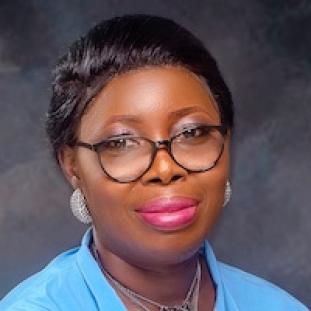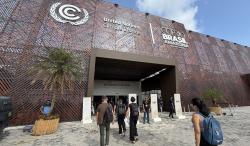Gendered statistics, showing a clear gender gap, are forcing a rethink of inclusivity in society. Many existing research on water and gender interlinkages globally is largely descriptive, repetitive, and limited in practical application. Evidence from gendered statistics in the built environment made the way for inclusive planning and design strategies in several key areas like access, mobility, climate resilience, health, and hygiene. So, evidence of gender gaps through apt quantification will help push for the much-needed greater inclusivity in the water sector. Quantifying the number of women in the water sector is a great first step in increasing women’s representation but ensuring women’s inclusivity in leadership positions will require another layer of quantification - an impact evaluation assessment of e.g., the role of women. Reinforcing that for more inclusivity and effective water management, quantification of water-gender interlinkages is first ‘Numbers’ and then ‘Impact evaluation’.
Women are recognized as active managers of water for household and productive uses. Many studies revealed that women’s involvement enhanced water supply, quality, and sustainability – their representation, a requisite and threat to water resources management. Also, a growing body of evidence shows that water projects can become more effective when women participate and achieve even greater benefits (reduced water-related risks and conflicts) when in leadership positions. Despite these, their participation in decision-making, and advancements as professionals in the water sector, remain minimal. Women are significantly underrepresented in the water workforce, and data on their role across the water sector (globally and nationally) are limited. To address the problem, the lack of sex-disaggregated data - a major obstacle to estimating women’s representation - must be tackled.
This project will provide a numerical assessment of the status of women’s representation in the water sector in individual countries/regions of the world, and hence - a basis for moving beyond just broad calls for gender inclusion in the water sector. This may require identifying relevant gender-responsive indicators, the metrics, scoring systems, and the design of methodologies to harvest data from various sources into national and global indices. The key objectives of the project are:
Enumerate and compare actual women’s representation in the water sector at the national/regional and global levels.
Determine the rate and direction of change in women’s representation in individual countries/regions.
Identify, collect, and examine available data for such quantitative assessments and identify data gaps that need to be filled, if a more accurate and confident analysis of women’s representation in water sectors nationally or globally needs to be made.
Develop an overall platform that, with time, may become a policy-into-practice tool that will provide an up-to-date overview of individual countries’ women representation; showing progress and enabling comparison over time, and helping to identify key paths for raising levels of women’s representation.
Deliver knowledge dissemination programs on water and gender-sensitive water management to a wide range of stakeholders.
The Project fits with theUNU-INWEH 2020-2024 Strategic Plan’s thematic focus “Advancing gender equality for effective water management” and the overarching mission to provide policymakers with reliable analysis and practical solutions to complex and pressing water challenges - in this case, addressing women’s representation in the water and gender interlinkages. Also, part of this project will be in close interaction with other UNU-INWEH projects to ensure that they all include some gender-related aspects, and highlight their impact evaluation. This issue remains at the forefront of the Sustainable Development Goals (SDGs), primarily SDG 5 (gender equality), SDG 6 (water and sanitation needs), and SDG 16 (inclusive policies and effective institutions). The Project will develop a series of quantitative data sets that will provide insight into the role of women in water-related industries, the degree to which women are represented across the various dimensions of the water sector and use that as a baseline against which to improve and force a rethink of inclusive planning and policies. Doing so will help identify opportunities for greater inclusion, representation, knowledge generation, and training at global and country levels.
This project builds on the previous UNU-INWEH project "Assessing Impacts of Water and Climate-Induced Migration on Women and Girls" (Pelikan Code:16531), which was implemented from 2019 to late 2021.


